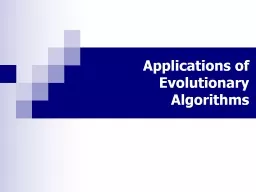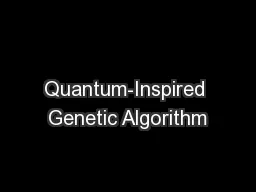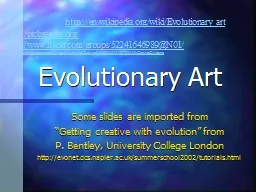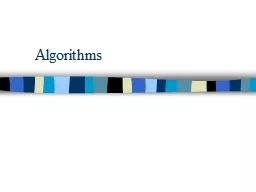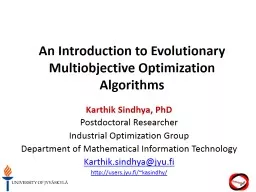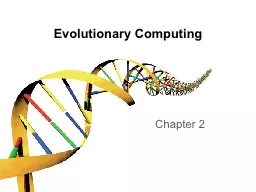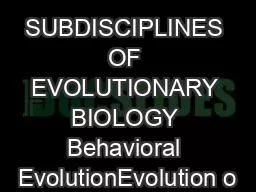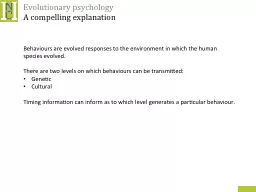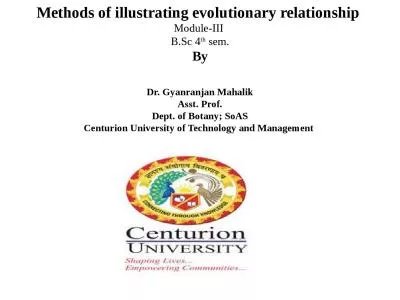PPT-Applications of Evolutionary Algorithms
Author : festivehippo | Published Date : 2020-08-03
What you will learn Common traits of problems which can be solved by EAs efficiently HUMIES competition with few examples of winning solutions of various problems
Presentation Embed Code
Download Presentation
Download Presentation The PPT/PDF document "Applications of Evolutionary Algorithms" is the property of its rightful owner. Permission is granted to download and print the materials on this website for personal, non-commercial use only, and to display it on your personal computer provided you do not modify the materials and that you retain all copyright notices contained in the materials. By downloading content from our website, you accept the terms of this agreement.
Applications of Evolutionary Algorithms: Transcript
Download Rules Of Document
"Applications of Evolutionary Algorithms"The content belongs to its owner. You may download and print it for personal use, without modification, and keep all copyright notices. By downloading, you agree to these terms.
Related Documents

